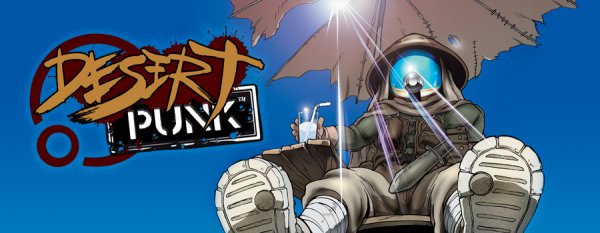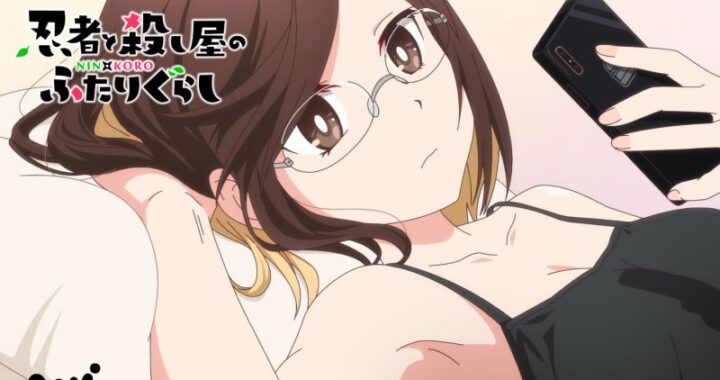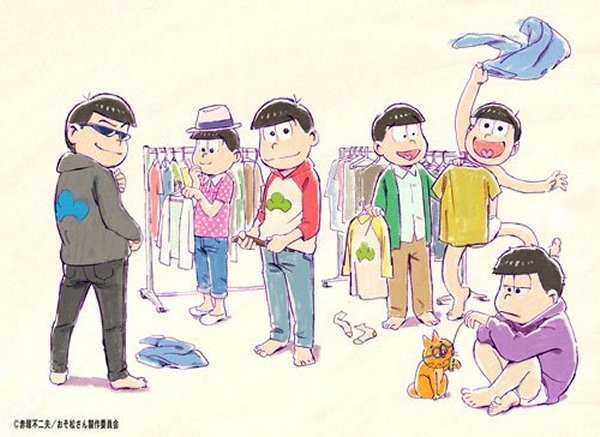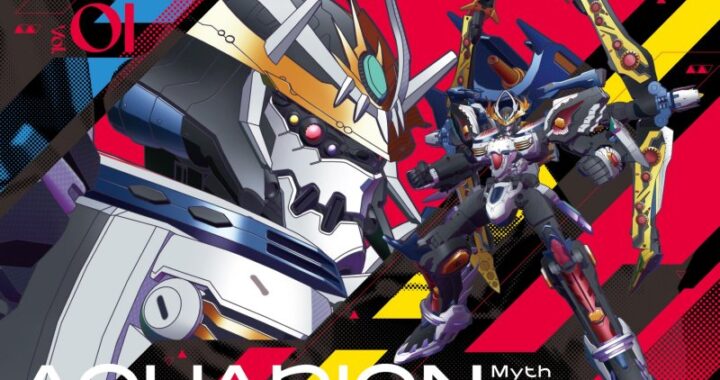Please note: This was originally published as a Ten Years Later piece in 2014.
I watched several episodes of Desert Punk, which premiered in October 2004, for the first time in May 2006, on a work/vacation trip in Tucson, Arizona. A high plains desert resident, the lower classic Sonoran Desert was too warm and even humid, the portion of the city I was staying in too indistinguishable from a suburb back home, and with little time or energy to explore the surrounding area (a regret) I stayed inside for those couple days, watching the second DVD volume of episodes five through eight.
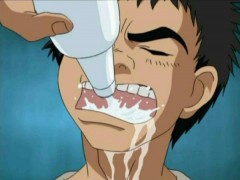 And that is my topical connection to Desert Punk, a perverted and profane action comedy set in the live-and-let-die post-apocalyptic landscape of, naturally, the Great Kanto Desert. Beyond that, I just think it’s funny.
And that is my topical connection to Desert Punk, a perverted and profane action comedy set in the live-and-let-die post-apocalyptic landscape of, naturally, the Great Kanto Desert. Beyond that, I just think it’s funny.
Funny in an embarrassed sort of way, knowing it well for its inclination to give into the crude possibilities of its eponymous bounty-hunting lead, Kanta, a.k.a. Sunabouzu, The Desert Punk. Especially involving any female character he encounters. Except for his apprentice, Kosuna, thankfully, because she’s too young. And that’s important because spunky little pink-haired orphaned wannabe bounty hunter Kosuna is the moral center of Desert Punk. If that’s important. (Not that her own morals are not fungible, or at least negotiable: she gets Kanta to hire her by showing him a picture of a particularly well-endowed swimsuit model, suggesting she’s her mother, and therefore her future genetic destiny.)
 No one in the Great Kanto Desert has much morality to begin with. A wild west landscape—as much The Wild Bunch as The Road Warrior—corrupt conglomerates and quasi-governments, criminal gangs, mercenaries, and ruthless bounty hunters crowd out the landscape for the desperate few civilians who try to scrape by (and who play comic relief for their trouble). There is a story to all of this, slow in the building, about power and wealth and freedom (what else?), but, in one telling, its point is to ask what honor means in a land of anti-heroes. Kanta’s not a nice guy, not even likable, but he’s absurd and at least good at his job, and his attitude attracts more absurdity. Other bounty hunters in this world—the buxom and efficient Junko (Kanta’s lustful target), the team-orientated Machine Gun Brothers (Kanta’s childhood friends), and menacing Amagumo (“Rain Spider”; Kanta’s chief rival)—are rare allies, and as willing as he to sacrifice the common good, or each other, for personal gain.
No one in the Great Kanto Desert has much morality to begin with. A wild west landscape—as much The Wild Bunch as The Road Warrior—corrupt conglomerates and quasi-governments, criminal gangs, mercenaries, and ruthless bounty hunters crowd out the landscape for the desperate few civilians who try to scrape by (and who play comic relief for their trouble). There is a story to all of this, slow in the building, about power and wealth and freedom (what else?), but, in one telling, its point is to ask what honor means in a land of anti-heroes. Kanta’s not a nice guy, not even likable, but he’s absurd and at least good at his job, and his attitude attracts more absurdity. Other bounty hunters in this world—the buxom and efficient Junko (Kanta’s lustful target), the team-orientated Machine Gun Brothers (Kanta’s childhood friends), and menacing Amagumo (“Rain Spider”; Kanta’s chief rival)—are rare allies, and as willing as he to sacrifice the common good, or each other, for personal gain.
Kosuna, dreaming of growing up to be the “power babe” of the desert, looks up to Kanta’s abilities, and Junko’s poise (even if she thinks the older woman a rival), and she exhibits little patience with hapless civilians who aren’t trying as hard as she is to make it, but she’s still young and naive enough to care about life and death, and to believe, at least a little, in honor. Kanta’s role is, in a way, to attempt to disabuse her of this mindset. But one of Kosuna’s positive traits is her stubbornness.
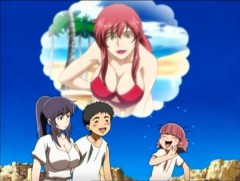 Save for a later turn to more grim and sensational seriousness, this is funny, ridiculous stuff, by the way. (I understand the original manga, by Usune Masatoshi, to be much less silly, with more dark humor.) Most of this is in my appreciation for Kosuna, a forerunner, in Takahiro Yoshimatsu’s anime character designs, of the cute, quirky, moe-inspiring, gun-wielding, violent young girl. Shows in the proceeding years built worlds of and for these types of characters, but Kosuna’s almost alone in Desert Punk (a rich spoiled brat hostage in one episode doesn’t count) and she’s the clever and effective hook for an audience at the time beginning to splinter between genre and character-based (moe) shows. Appearing in that era, adapted as it was from its source material, it’s a little unique in my mind. Action-adventures with a dominant male character often—and no more than now, these ten years later—feature a more passive female companion, maybe secretly powerful, maybe wiser, but quiet instead of obnoxious, mysterious instead of comic relief. Kosuna, alone with the Punk’s rudeness, perversity, and greed (and that of all of his similar friends and enemies) has to stand on her own, and to do that she has to be very wicked, and very funny.
Save for a later turn to more grim and sensational seriousness, this is funny, ridiculous stuff, by the way. (I understand the original manga, by Usune Masatoshi, to be much less silly, with more dark humor.) Most of this is in my appreciation for Kosuna, a forerunner, in Takahiro Yoshimatsu’s anime character designs, of the cute, quirky, moe-inspiring, gun-wielding, violent young girl. Shows in the proceeding years built worlds of and for these types of characters, but Kosuna’s almost alone in Desert Punk (a rich spoiled brat hostage in one episode doesn’t count) and she’s the clever and effective hook for an audience at the time beginning to splinter between genre and character-based (moe) shows. Appearing in that era, adapted as it was from its source material, it’s a little unique in my mind. Action-adventures with a dominant male character often—and no more than now, these ten years later—feature a more passive female companion, maybe secretly powerful, maybe wiser, but quiet instead of obnoxious, mysterious instead of comic relief. Kosuna, alone with the Punk’s rudeness, perversity, and greed (and that of all of his similar friends and enemies) has to stand on her own, and to do that she has to be very wicked, and very funny.
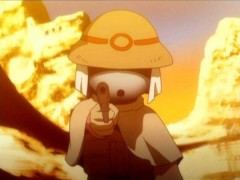 To this, add Chiwa Saito, on the Japanese side, and Luci Christian, on the English side. Their Kosunas are indeed wicked and funny, sometimes in the same way, but often enough different. Christian’s, the first I heard, is predominant in my mind, a moody, violent version of her chipper and quirky-cute young girl’s voice, last heard for me at the time (sans violent mood swings) with Princess Tutu’s titular Duck. Her Kosuna is earnest, pleading, and sarcastic, but genuinely tough. And a real delight.
To this, add Chiwa Saito, on the Japanese side, and Luci Christian, on the English side. Their Kosunas are indeed wicked and funny, sometimes in the same way, but often enough different. Christian’s, the first I heard, is predominant in my mind, a moody, violent version of her chipper and quirky-cute young girl’s voice, last heard for me at the time (sans violent mood swings) with Princess Tutu’s titular Duck. Her Kosuna is earnest, pleading, and sarcastic, but genuinely tough. And a real delight.
That dub also features Eric Vale as Kanta—obnoxious, whiny, insecure, generally insincere, and manipulative; or, also a memorable performance. (Chihiro Suzuki wears the Punk’s helmet with equal verve on the Japanese track.) The curiosity with the dub, and tied to my memory of the first volume’s release from Funimation Entertainment in late February 2006, is that the most sexual or suggestive lines were toned down for those first four episodes. By the second volume, in late April, the marginally more family-friendly version was out the window, the team of adapters perhaps realizing the futility with what follows.
 I do not love Desert Punk, no more now than a year after I first watched it. But I love parts of it, and have enjoyed re-watching it, and for exploitative action comedies (not really a niche in anime) it’s a shortlist title. I have no problem continuing to own it, and I continue to pull out references to Kosuna’s character or specific episodes or the dub when the opportunity arises (episode 12, “A Change of Heart”, for instance, as one of the most unique and standalone examples of all three).
I do not love Desert Punk, no more now than a year after I first watched it. But I love parts of it, and have enjoyed re-watching it, and for exploitative action comedies (not really a niche in anime) it’s a shortlist title. I have no problem continuing to own it, and I continue to pull out references to Kosuna’s character or specific episodes or the dub when the opportunity arises (episode 12, “A Change of Heart”, for instance, as one of the most unique and standalone examples of all three).
And there is some enjoyment in looking back on some things. I had forgotten the curious fun of the promotional art used for this show (Kosuna, often, in cover parodies for movies like Kill Bill and Black Hawk Down) and of course the hokey and even bizarre original Japanese bonus video segments (what other kinds are there?), including live-action shorts of Desert Punk doing Desert Punk poses while the theme song croons about Desert Punk. The sort of silliness a mostly silly show needs, especially years down the road when you pull something off the shelf and wonder how it got there.
